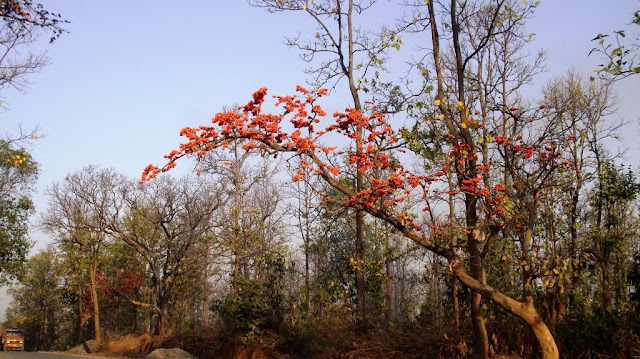Subhashis Das
In the Makar Sankranti/Uttarayan the ingress of the sun occurs from the Sagittarius (Dhanu) into the zodiac of Makar (Capricorn) hence this phenomenon is known as Makar Sankranti. The assumption is that from the Makar Sankranti day the sun travels to the North (uttar) thereby increasing the length of the day and therefore this occurrence is also known as Uttarayan.
However
22 or 23 Dec is the date of the Winter Solstice when the sun shines on the
Tropic of Capricorn travelling farthest in the Southern Hemisphere.
For this reason the Winter Solstice day is the shortest day in the Northern
Hemisphere and the longest in the Southern Hemisphere.
From the following day of the Winter Solstice, the length of the
day in the Northern Hemisphere begins to increase as the sun commences its
journey towards the Tropic of Cancer for the Summer Solstice.
.png) |
Stones within the very ancient megalithic complexes of CHANO and PUNKRI BURWADIH at Jharkhand in India were positioned by prehistoric megalithic astronomers in alignment towards the Winter Solstice sunrises.
A. The small stone pointer inside the now demolished CHANO megalithic site can be seen to have been positioned to accurately point towards the rising sun on Winter Solstice mornings.
B. Gathering at the CHANO MEGALITHIC COMPLEX to view the
prehistoric astronomical spectacle.
C. PUNKRI BURWADIH MEGALITHIC COMPLEX.
D. The sun in the PUNKRI BURWADIH MEGALITHIC COMPLEX
rises from in-between the two menhirs M1 & M2 on Winter Solstice
mornings.
Much akin to Newgrange, Stonehenge and other megalithic sites of England and Europe in a few megalithic complexes of Punkri Burwadih and in the now demolished Chano of Hazaribagh, in Jharkhand the early megalithic astronomers planted their stones in alignment towards the Winter Solstice sunrises to observe the day’s sunrises in the south-east horizon. (Note in the images above)
Hence such astronomy was known as Observational Astronomy.
However the observation of the rise of the sun from the horizon on the Makar Sankranti day of the 14 or 15th Jan does not endorse appropriate results as the fixing of this day does not have its foundations on observation of the sun’s transit but on calculations based on Vedanga Jyotish’s Siddhanta (calculative) khagoul/astronomy when the transition of the sun occurs from the Sagittarius (Dhanu) into the zodiac of Makar (Capricorn).
Women praying at the sun after a holy dip in the Ganga Sagar Mela in West Bengal during the Makar Sankranti. Credit: Zee 5
Devotees during the
occasion of Makar Sankranti take a holy bath at sacred
rivers which meets other rivers or the ocean; symbolic of a Sankranti which
is also suggestive of the ingress of one zodiac into another.
This siddhanta
or calculation astronomy is on contrary to the Observational Astronomy prevalent during the
prehistoric era of the non-Vedic megalithic times.








































